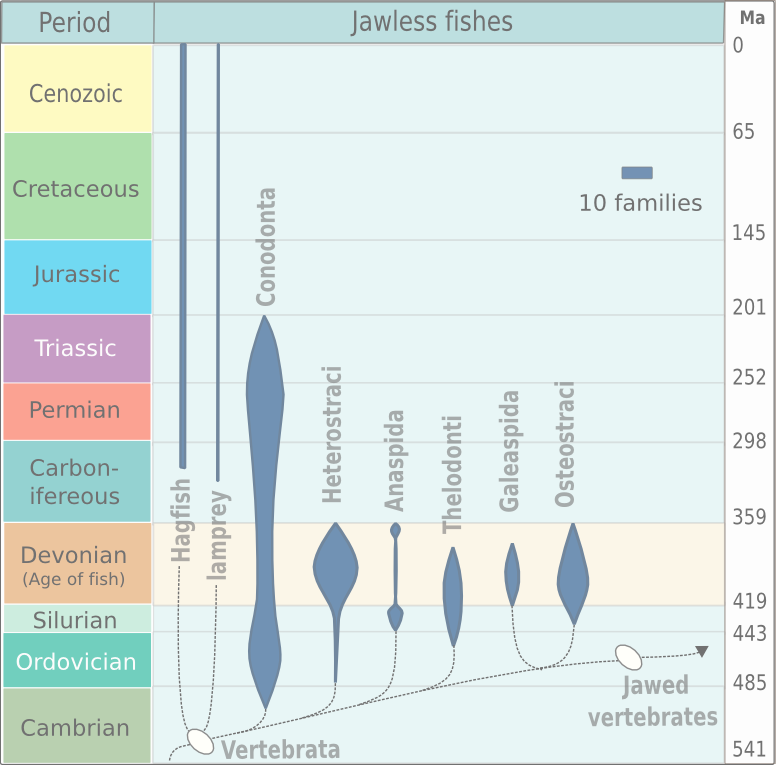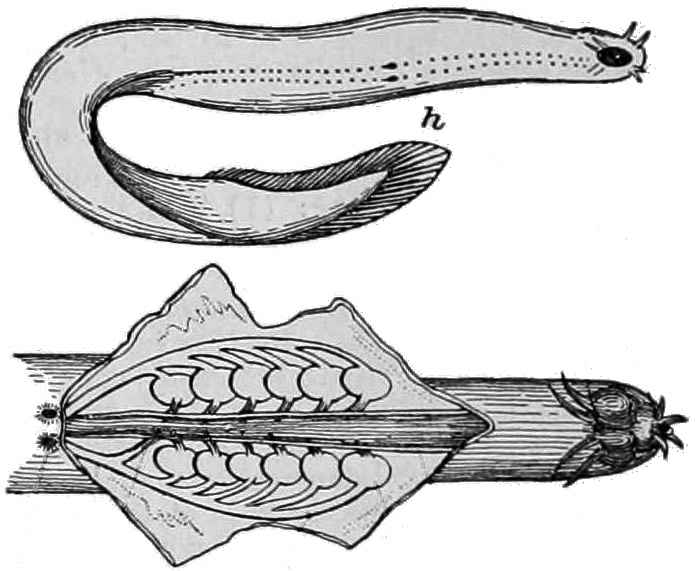|
Cyclostomes
Cyclostome is a biological term (from the Greek for "round mouth") used in a few different senses: * for the taxon Cyclostomi, which comprises the extant jawless fishes: the hagfish (Myxini) and the lampreys (Petromyzontidae). This was thought for a time to be a paraphyletic group and this usage of the term was deprecated by some. However, there is strong molecular evidence for cyclostome monophyly, and thus the term remains in use. * for the Order Cyclostomatida of bryozoans, tiny animals that live in colonies and form large calcitic skeletons. * for one of two subgroups of braconid The Braconidae are a family of parasitoid wasps. After the closely related Ichneumonidae, braconids make up the second-largest family in the order Hymenoptera, with about 17,000 recognized species and many thousands more undescribed. One analys ... wasps. References {{Animal common name ... [...More Info...] [...Related Items...] OR: [Wikipedia] [Google] [Baidu] |
Cyclostomatida
Cyclostomatida, or cyclostomata (also known as cyclostomes), are an ancient order of stenolaemate bryozoans which first appeared in the Lower Ordovician. It consists of 7+ suborders, 59+ families, 373+ genera, and 666+ species. The cyclostome bryozoans were dominant in the Mesozoic; since that era, they have decreased. Currently, cyclostomes seldom constitute more than 20% of the species recorded in regional bryozoan faunas. Taxonomy Traditionally, cyclostomes have been divided into two groups according to the skeletal organization. In free-walled (or double-walled) cyclostomes, the exterior frontal walls of the zooids are uncalcified; autozooids have either a polygonal aperture bounded by vertical interior walls, or a subcircular aperture in species with kenozooids filling the spaces between the autozooids. By contrast, fixed-walled (or single-walled) cyclostomes have much of the exterior frontal wall calcified; autozooids normally have a subcircular aperture located a ... [...More Info...] [...Related Items...] OR: [Wikipedia] [Google] [Baidu] |
Cyclostomi
Cyclostomi, often referred to as Cyclostomata , is a group of vertebrates that comprises the living jawless fishes: the lampreys and hagfishes. Both groups have jawless mouths with horny epidermal structures that function as teeth called ceratodontes, and branchial arches that are internally positioned instead of external as in the related jawed fishes. The name Cyclostomi means "round mouths". It was named by Joan Crockford-Beattie. Possible external relationships This taxon is often included in the paraphyletic superclass Agnatha, which also includes several groups of extinct armored fishes called ostracoderms. Most fossil agnathans, such as galeaspids, thelodonts, and osteostracans, are more closely related to vertebrates with jaws (called gnathostomes) than to cyclostomes. Cyclostomes seem to have split off before the evolution of dentine and bone, which are present in many fossil agnathans, including conodonts. Biologists disagree on whether cyclostomes are a ... [...More Info...] [...Related Items...] OR: [Wikipedia] [Google] [Baidu] |
Agnatha
Agnatha (, Ancient Greek 'without jaws') is an infraphylum of jawless fish in the phylum Chordata, subphylum Vertebrata, consisting of both present ( cyclostomes) and extinct (conodonts and ostracoderms) species. Among recent animals, cyclostomes are sister to all vertebrates with jaws, known as gnathostomes. Recent molecular data, both from rRNA and from mtDNA as well as embryological data, strongly supports the hypothesis that living agnathans, the cyclostomes, are monophyletic. The oldest fossil agnathans appeared in the Cambrian, and two groups still survive today: the lampreys and the hagfish, comprising about 120 species in total. Hagfish are considered members of the subphylum Vertebrata, because they secondarily lost vertebrae; before this event was inferred from molecular and developmental data, the group Craniata was created by Linnaeus (and is still sometimes used as a strictly morphological descriptor) to reference hagfish plus vertebrates. While ... [...More Info...] [...Related Items...] OR: [Wikipedia] [Google] [Baidu] |
Hagfish
Hagfish, of the class Myxini (also known as Hyperotreti) and order Myxiniformes , are eel-shaped, slime-producing marine fish (occasionally called slime eels). They are the only known living animals that have a skull but no vertebral column, although hagfish do have rudimentary vertebrae. Along with lampreys, hagfish are jawless; the two form the sister group to jawed vertebrates, and living hagfish remain similar to hagfish from around 300 million years ago. The classification of hagfish had been controversial. The issue was whether the hagfish was a degenerate type of vertebrate-fish that through evolution had lost its vertebrae (the original scheme) and was most closely related to lampreys, or whether hagfish represent a stage that precedes the evolution of the vertebral column (the alternative scheme) as is the case with lancelets. Recent DNA evidence has supported the original scheme. The original scheme groups hagfish and lampreys together as cyclostomes (or histori ... [...More Info...] [...Related Items...] OR: [Wikipedia] [Google] [Baidu] |
Lamprey
Lampreys (sometimes inaccurately called lamprey eels) are an ancient extant lineage of jawless fish of the order Petromyzontiformes , placed in the superclass Cyclostomata. The adult lamprey may be characterized by a toothed, funnel-like sucking mouth. The common name "lamprey" is probably derived from Latin , which may mean "stone licker" ( "to lick" + "stone"), though the etymology is uncertain. ''Lamprey'' is sometimes seen for the plural form. There are about 38 known extant species of lampreys and five known extinct species. Parasitic carnivorous species are the most well-known, and feed by boring into the flesh of other fish to suck their blood; but only 18 species of lampreys engage in this micropredatory lifestyle. Of the 18 carnivorous species, nine migrate from saltwater to freshwater to breed (some of them also have freshwater populations), and nine live exclusively in freshwater. All non-carnivorous forms are freshwater species. Adults of the non-carnivorous ... [...More Info...] [...Related Items...] OR: [Wikipedia] [Google] [Baidu] |
Biology
Biology is the scientific study of life. It is a natural science with a broad scope but has several unifying themes that tie it together as a single, coherent field. For instance, all organisms are made up of cells that process hereditary information encoded in genes, which can be transmitted to future generations. Another major theme is evolution, which explains the unity and diversity of life. Energy processing is also important to life as it allows organisms to move, grow, and reproduce. Finally, all organisms are able to regulate their own internal environments. Biologists are able to study life at multiple levels of organization, from the molecular biology of a cell to the anatomy and physiology of plants and animals, and evolution of populations.Based on definition from: Hence, there are multiple subdisciplines within biology, each defined by the nature of their research questions and the tools that they use. Like other scientists, biologists use t ... [...More Info...] [...Related Items...] OR: [Wikipedia] [Google] [Baidu] |
Greek Language
Greek ( el, label= Modern Greek, Ελληνικά, Elliniká, ; grc, Ἑλληνική, Hellēnikḗ) is an independent branch of the Indo-European family of languages, native to Greece, Cyprus, southern Italy (Calabria and Salento), southern Albania, and other regions of the Balkans, the Black Sea coast, Asia Minor, and the Eastern Mediterranean. It has the longest documented history of any Indo-European language, spanning at least 3,400 years of written records. Its writing system is the Greek alphabet, which has been used for approximately 2,800 years; previously, Greek was recorded in writing systems such as Linear B and the Cypriot syllabary. The alphabet arose from the Phoenician script and was in turn the basis of the Latin, Cyrillic, Armenian, Coptic, Gothic, and many other writing systems. The Greek language holds a very important place in the history of the Western world. Beginning with the epics of Homer, ancient Greek literature includes many works of l ... [...More Info...] [...Related Items...] OR: [Wikipedia] [Google] [Baidu] |
Paraphyletic
In taxonomy (general), taxonomy, a group is paraphyletic if it consists of the group's most recent common ancestor, last common ancestor and most of its descendants, excluding a few Monophyly, monophyletic subgroups. The group is said to be paraphyletic ''with respect to'' the excluded subgroups. In contrast, a monophyletic group (a clade) includes a common ancestor and ''all'' of its descendants. The terms are commonly used in phylogenetics (a subfield of biology) and in the tree model of historical linguistics. Paraphyletic groups are identified by a combination of Synapomorphy and apomorphy, synapomorphies and symplesiomorphy, symplesiomorphies. If many subgroups are missing from the named group, it is said to be polyparaphyletic. The term was coined by Willi Hennig to apply to well-known taxa like Reptilia (reptiles) which, as commonly named and traditionally defined, is paraphyletic with respect to mammals and birds. Reptilia contains the last common ancestor of reptiles a ... [...More Info...] [...Related Items...] OR: [Wikipedia] [Google] [Baidu] |
Monophyly
In cladistics for a group of organisms, monophyly is the condition of being a clade—that is, a group of taxa composed only of a common ancestor (or more precisely an ancestral population) and all of its lineal descendants. Monophyletic groups are typically characterised by shared derived characteristics (synapomorphies), which distinguish organisms in the clade from other organisms. An equivalent term is holophyly. The word "mono-phyly" means "one-tribe" in Greek. Monophyly is contrasted with paraphyly and polyphyly as shown in the second diagram. A ''paraphyletic group'' consists of all of the descendants of a common ancestor minus one or more monophyletic groups. A '' polyphyletic group'' is characterized by convergent features or habits of scientific interest (for example, night-active primates, fruit trees, aquatic insects). The features by which a polyphyletic group is differentiated from others are not inherited from a common ancestor. These definitions have take ... [...More Info...] [...Related Items...] OR: [Wikipedia] [Google] [Baidu] |




